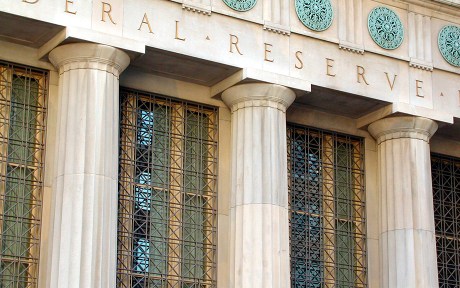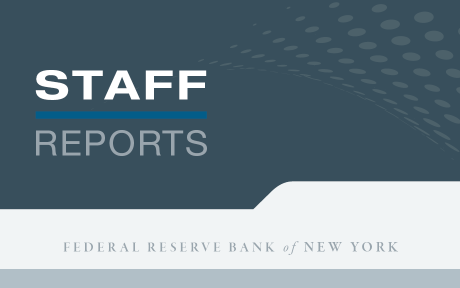
One of the core responsibilities of central banks is to act as “lender of last resort” to the financial system. In the U.S., the Federal Reserve has been operating as a lender of last resort through its “discount window” (DW) for more than a century. Historically, however, the DW has been plagued by stigma—banks’ reluctance to use the DW, even for benign reasons, out of concerns that it could be interpreted as a sign of financial weakness. In this post, we report on new research showing that once a DW facility is stigmatized, removing that stigma is difficult.
To address failures in the interbank market and prevent the negative externalities they can generate, central banks typically act as lender of last resort. The objective is to avoid unnecessary and socially costly failures by providing liquidity support when private alternatives are not available or are prohibitively expensive. Historically, however, DW usage has been scant, even when banks faced acute liquidity shortages, as they did at the onset of the 2008 global financial crisis. DW stigma is a first-order concern for central banks because they can only fulfill their lender of last resort obligations through the DW if financial institutions are willing to use it. Several central banks have reformed their DWs over the years with the explicit objective of mitigating stigma (for example, the Federal Reserve in 2003 and the Bank of England in 2015), and stigma was an important consideration in the design of new backstop facilities, such as the 2007 Term Auction Facility and the 2021 Standing Repo Facility.
The aftermath of the 2023 banking turmoil in the U.S. saw renewed interest in reforming the Federal Reserve’s DW. The rapid collapse of Silicon Valley Bank made it clear that modern bank runs can unfold in a matter of hours (through social media and online banking), instead of days or weeks as in the past. To prevent these runs, banks need the ability to access emergency funding as least as fast as depositors can withdraw cash. Policymakers believe that the DW should be uniquely positioned to provide ready access to liquidity (here or here). To achieve this objective, several reforms have been proposed, from streamlining DW operations to requiring that banks have enough collateral pre-positioned at the DW to cover any meaningful run on their assets. Further, recognizing that stigma must be mitigated, policymakers have suggested imposing a mandate for banks to access the DW regularly (here or here). This would not only ensure banks’ operational readiness when emergency funding is needed, but it could also mitigate stigma by making DW borrowing unremarkable and uninformative.
This mandate, originally proposed by Bill Winters in 2012 for the Bank of England’s DW, finds partial support in our 2020 paper. Using economic theory and experimental methods, we found that while lowering the cost of DW borrowing and making DW borrowing harder to detect are both ineffective measures, requiring banks to borrow at the DW at random times can prevent the formation of stigma. These results, however, do not imply that random borrowing may cure pre-existing stigma. In that original paper, we only considered a single DW policy and assumed the DW did not initially suffer from stigma.
In a more recent paper, we conduct a new series of experiments with two consecutive DW policies. First, the policy is such that the DW becomes severely stigmatized. Then a “cure” policy is introduced. Under the cure, economic theory predicts that behavior should shift to the unique stigma-free equilibrium. The first cure we consider is the same required random borrowing policy that prevented the formation of stigma in our original study. We find that, although required random borrowing significantly promotes DW borrowing, there is no evidence that its fully cures DW stigma. Further, doubling the frequency with which banks are required to visit the DW still does not cure stigma. Finally, we consider an extreme cure policy, making the DW free, and find that it also fails to cure stigma fully. An analysis of the data from our experiments suggests that once the DW becomes stigmatized, inertia sets in, and behavior becomes less responsive to the feedback that players receive. These results, combined with the results in our original study, suggest that required random borrowing may be a preventive measure, but not a curative intervention to treat DW stigma.
The results from our research echo the Federal Reserve’s experience. Over the years, DW policies have been modified on multiple occasions with the explicit objective of promoting DW borrowing and mitigating stigma. Some have argued that the changes made so far have not been satisfactory. Similarly, we found it difficult to cure pre-existing DW stigma in our experiments. In particular, our results suggest that the latest proposed reform, mandating regular DW borrowing, may ensure operational readiness, but it may not be sufficient to break stigma. In fact, our finding that even extreme interventions, such as making the DW free, may not fully cure stigma raises the question of whether there is any hope of removing the stigma already attached to the Federal Reserve’s DW. Instead, we outline two possible alternatives to the DW.
First, new (that is, not yet stigmatized) temporary emergency facilities could be introduced when liquidity markets become severely strained. These temporary facilities could be designed specifically to address the source of the problem at hand. This is in essence what the Federal Reserve has done in recent years when it introduced the Term Auction Facility at the onset of the Global Financial Crisis in December 2007, or the Bank Term Funding Program in March 2023. This approach, however, may not be fully satisfactory. Indeed, although such temporary facilities could fix nascent liquidity crises, they would not prevent them. Only a permanent facility like the DW could do so. This leads us to the second alternative.
Second, instead of trying to fix the DW, new permanent backstop facilities could be designed to be stigma-proof. One related example is the Standing Repo Facility introduced by the Federal Reserve in 2021 to provide primary dealers and banks with access to overnight liquidity. This facility was designed specifically to mitigate stigma concerns. In particular, it accepts only high-quality collateral (Treasuries and agency securities) and its rate is determined by auction. Although it has been little used to date, interest in the facility as a possible complement to the DW has grown in the aftermath of the 2023 banking turmoil (see here or here). In fact, our results suggest that to protect the Standing Repo Facility against the possible formation of stigma, some form of required random borrowing could be considered for this facility.

Olivier Armantier is the head of Consumer Behavior Studies in the Federal Reserve Bank of New York’s Research and Statistics Group.
How to cite this post:
Olivier Armantier, “Can Discount Window Stigma Be Cured? ,” Federal Reserve Bank of New York Liberty Street Economics, May 31, 2024, https://libertystreeteconomics.newyorkfed.org/2024/05/can-discount-window-stigma-be-cured/
BibTeX: View |
Disclaimer
The views expressed in this post are those of the author(s) and do not necessarily reflect the position of the Federal Reserve Bank of New York or the Federal Reserve System. Any errors or omissions are the responsibility of the author(s).













 RSS Feed
RSS Feed Follow Liberty Street Economics
Follow Liberty Street Economics